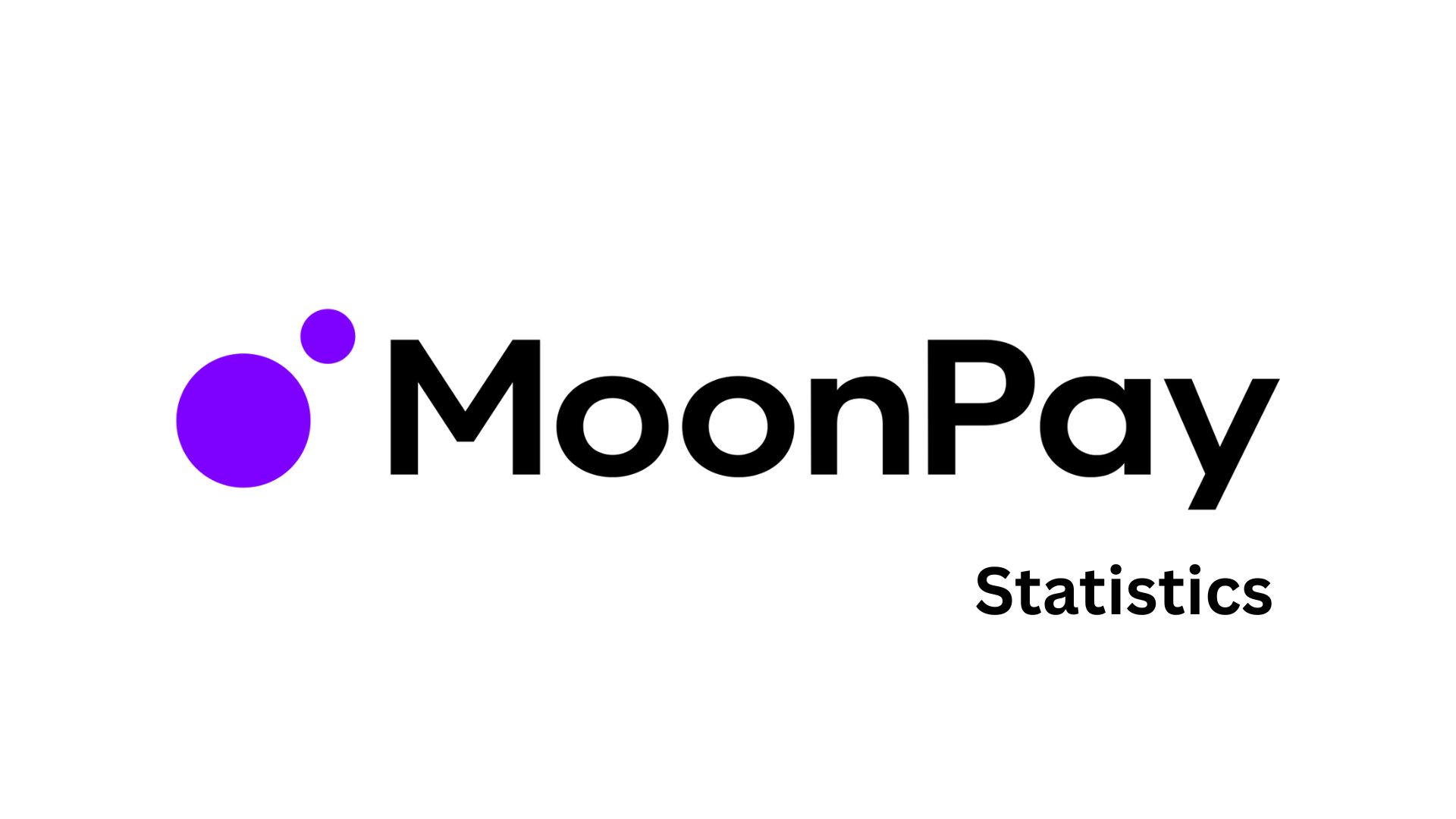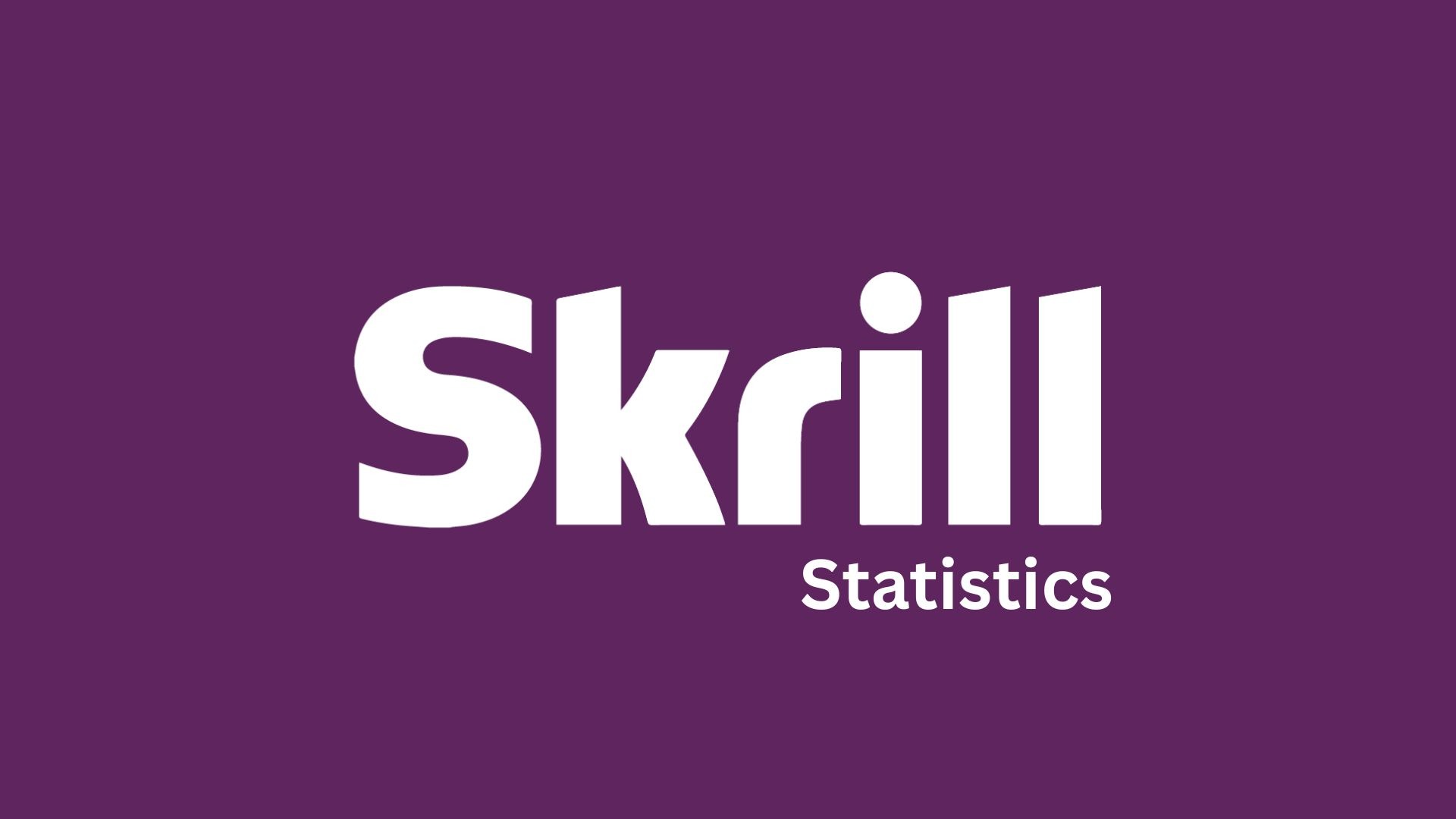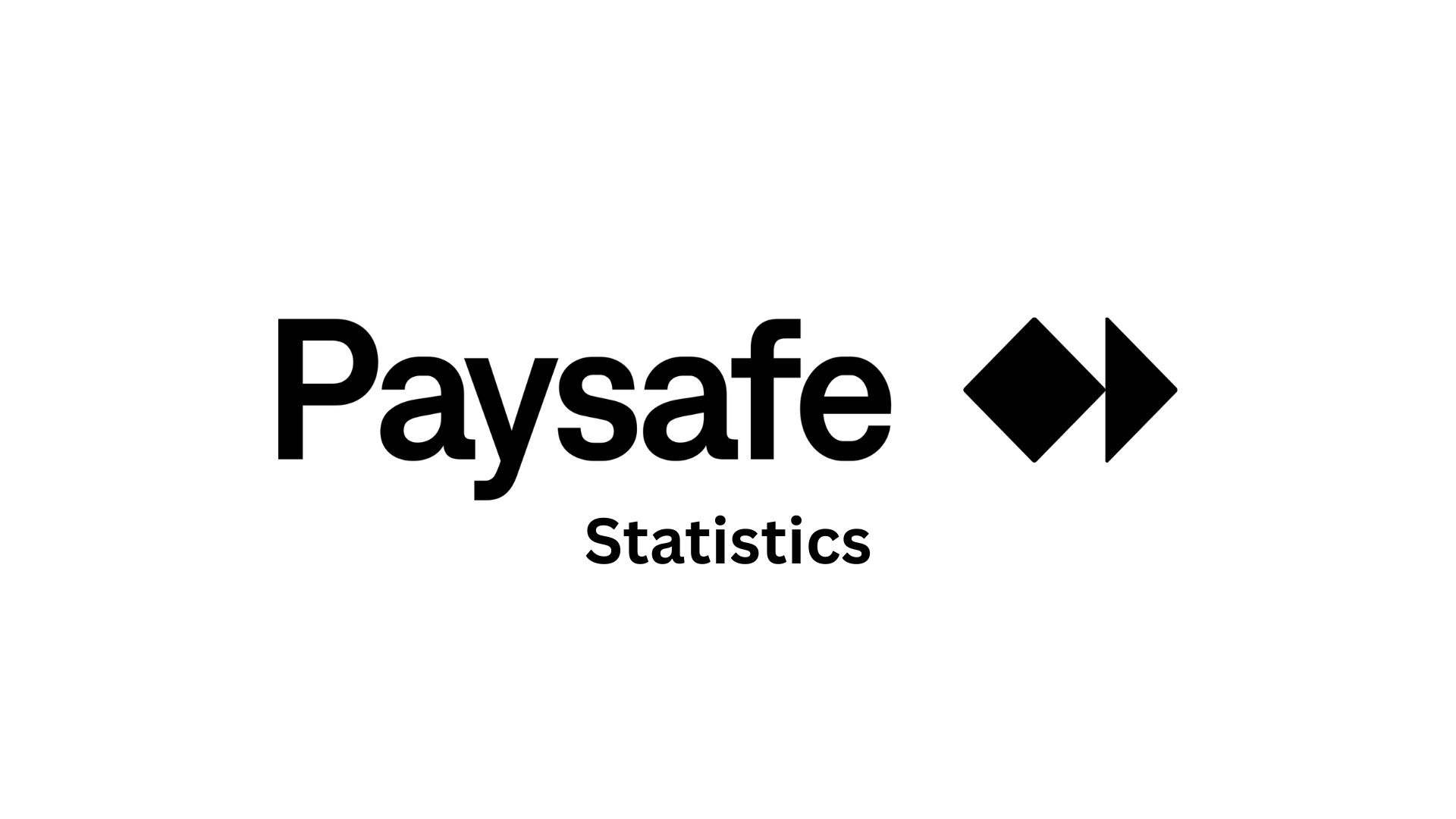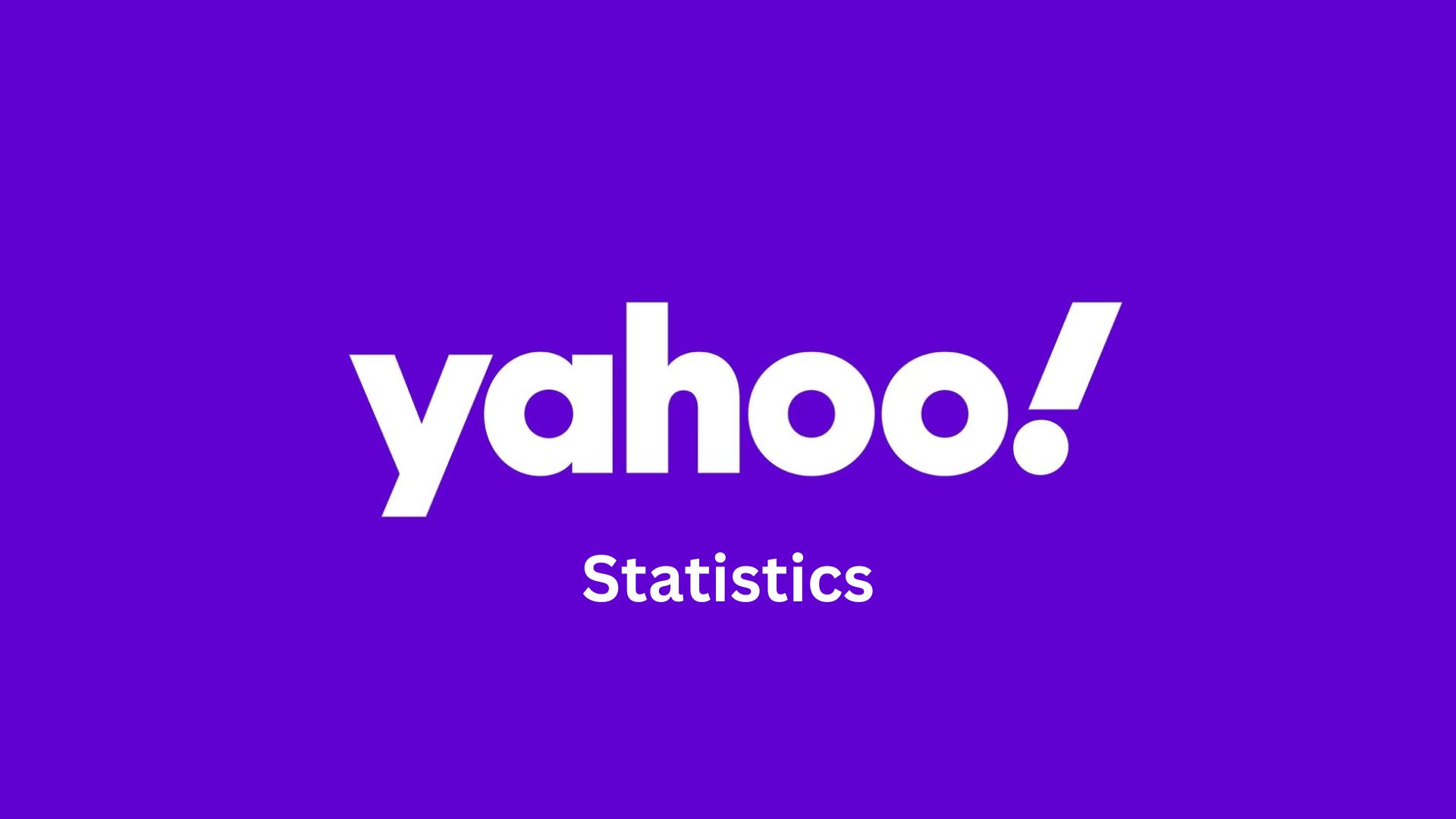Chromecast Statistics By Market Share, Security And Facts (2025)
Updated · Nov 04, 2025
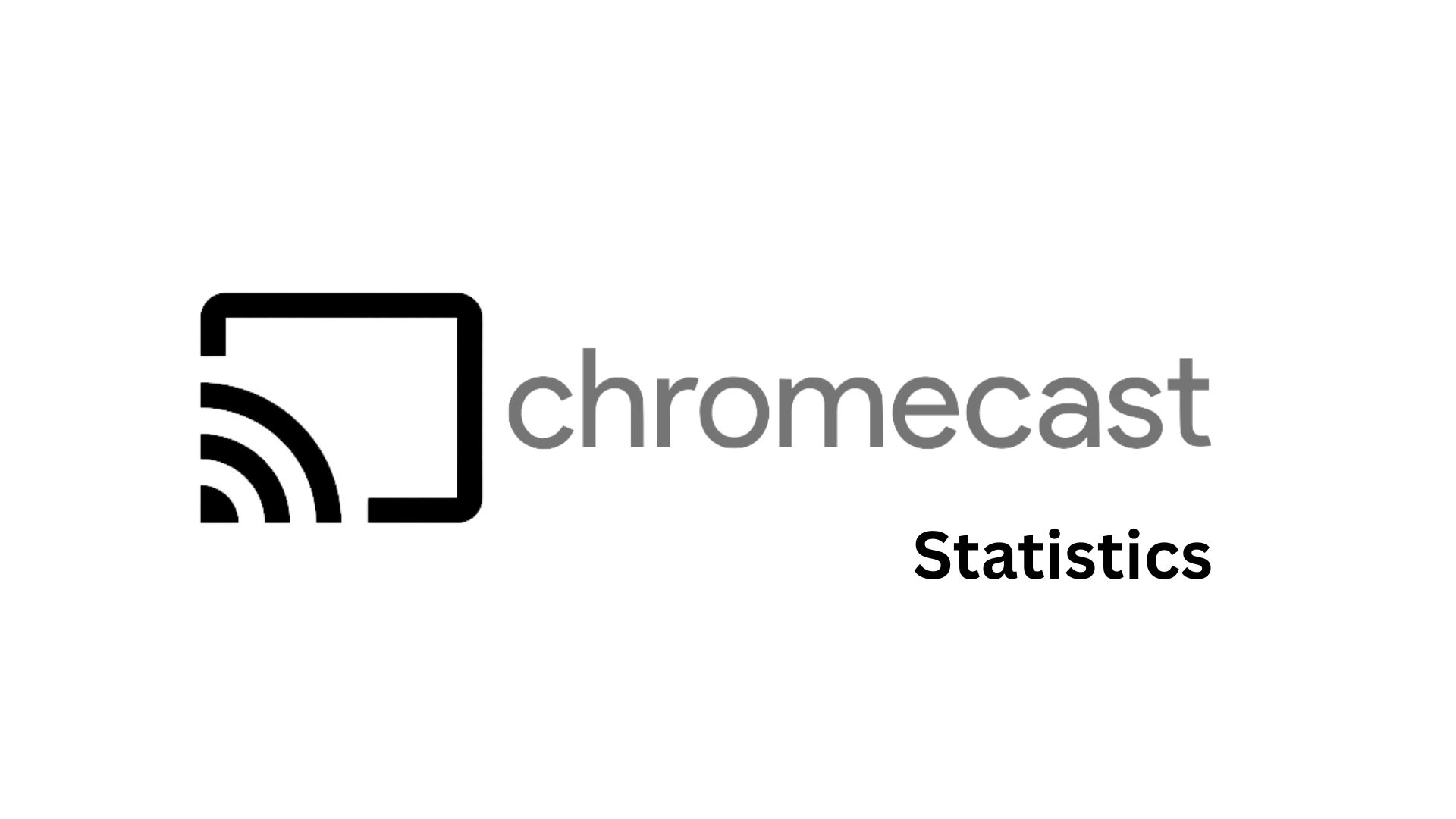
Table of Contents
Introduction
Chromecast Statistics: Chromecast, which is a streaming dongle that was first introduced in 2013, and at first, it was initially a tiny, inexpensive device; then it developed into a home video watching major way. By 2025, the whole range of Chromecast will have been largely discontinued, and a powerful new set-top box will have taken over its place; nevertheless, the device’s influence can still be traced in terms of sales, market share, and the plans of Google, TV manufacturers, and advertisers. This article combines the largest numbers and trends for the Chromecast statistics in 2025.
Editor’s Choice
- Chromecast was born out of a dream in 2013 that a US$35 dongle would be a great way to stream content to TV, if it ever came to that—and by then, it became a king of a tiny, maybe, an entire home theatre, but the same year it was discontinued in 2024.
- Global smart TV sales for 2020 counted for “smartest OS” Samsung’s Tizen, gaining 13% market share, having been the most in demand, followed by LG’s WebOS; while PlayStation, Roku TV OS, and Amazon Fire OS all came to occupy 6.4% of the market share.
- Google Chromecast devices were the most subject to fraudulent activities, with 53% fraud risk associated with them, while for Xiaomi it was 36%, and Vizio and Samsung had an equal share of 21%.
- Amlogic component-based Chromecast models were affected by a new vulnerability (CVE-2024-47036) in January 2025, but the issue was not remotely exploitable and was patched quickly.
- The period of March 9-10, 2025, witnessed the stoppage of 20 million devices, comprising Chromecast 2nd Gen and Chromecast Audio, due to the expiration of a security certificate that affected these devices; a temporary clock adjustment measure was provided as a solution.
- August 6, 2024, marked the official end to the Chromebook line by Google; however, the company assured users of continuous software and security updates for the devices.
- The Google TV Streamer, which was introduced as the successor to Chromecast, had certain features that included 32 GB storage, 4 GB RAM, 22% quicker CPU, Ethernet, and Thread smart home integration.
- The selling price of the new Google TV Streamer is US$99, which indicates that there has been a transition from being an economical casting device to a distinguished smart home streaming platform.
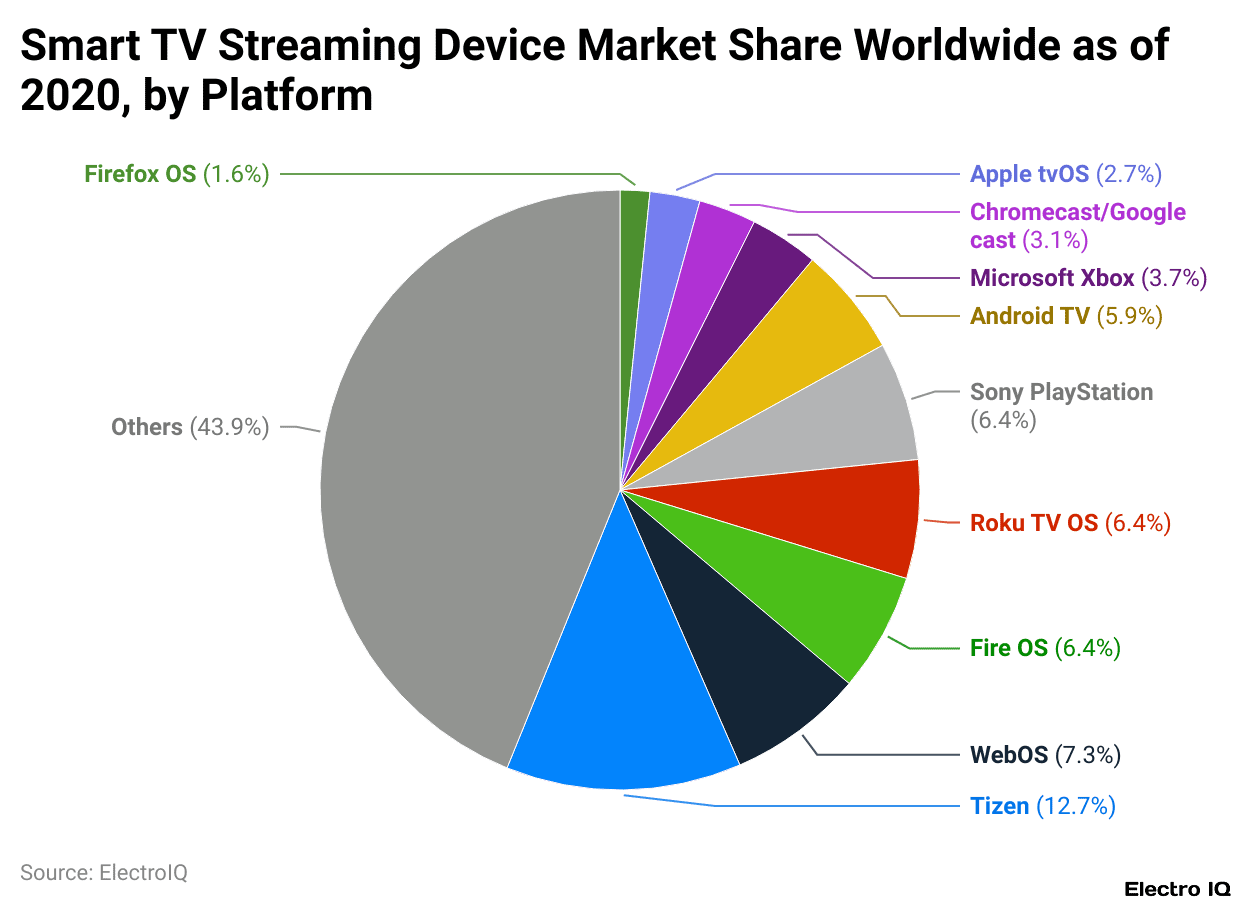
(Reference: statista.com)
- By the end of 2020, Tizen, the OS of Samsung TVs, was the most used TV streaming platform, with a share of around 13% of the total smart TVs, which made Samsung the leader in the smart TV software market.
- The second position was occupied by WebOS, which is the platform LG uses for its TVs, and that means that LG had the second-largest portion of smart TVs in use globally.
- Following them was a tie between three platforms with a market share of about 6.4% each: PlayStation by Sony, Roku, and Fire by Amazon.
- This signifies that although Tizen and WebOS were the top players in the market, there were many more systems with similar but smaller shares, which clearly indicates that the smart TV market was already very diverse and several companies were competing for users.
Chromecast And Fraud Attacks
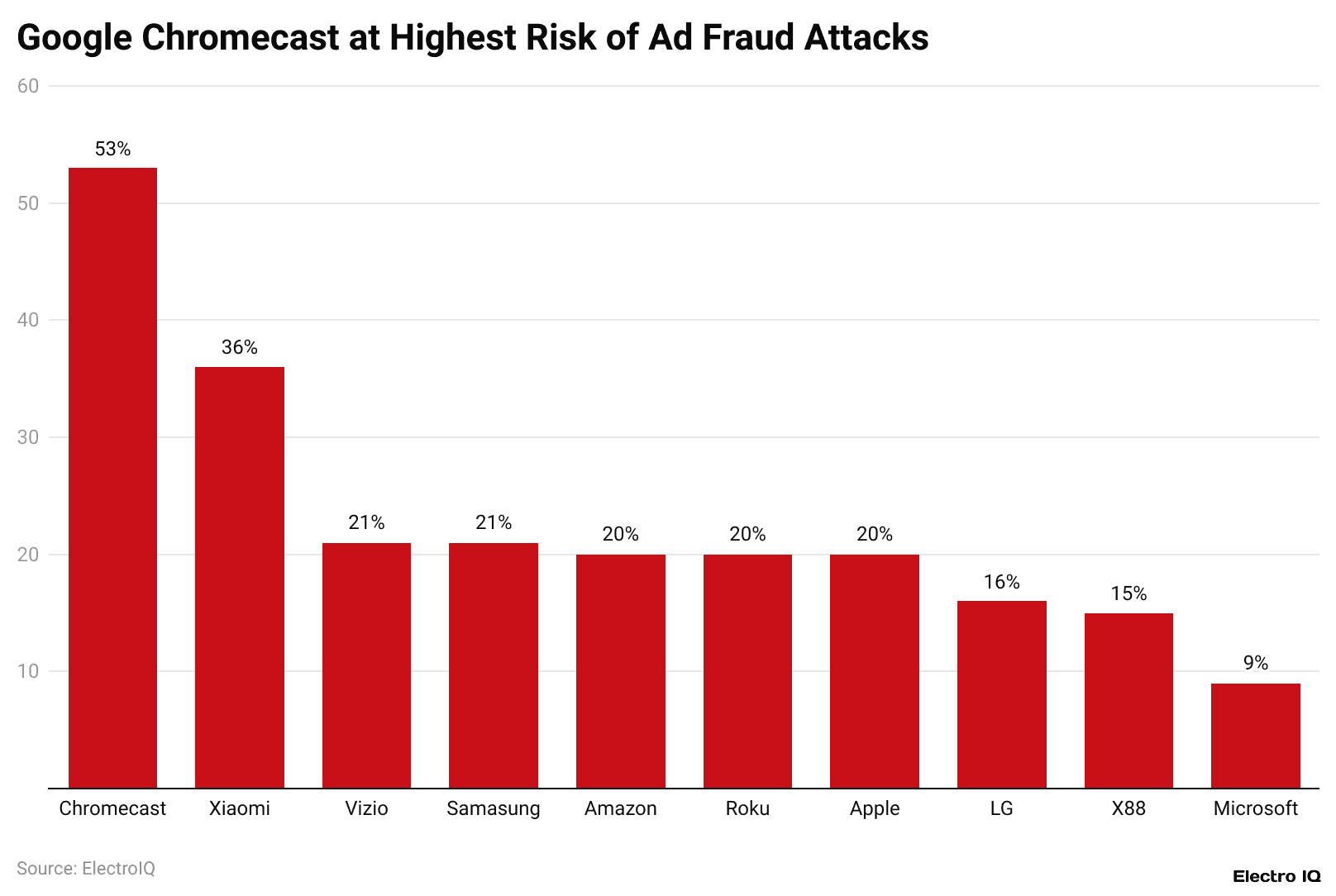
(Reference: coolest-gadgets.com)
- The statistics reveal that Google Chromecast devices are the most vulnerable to fraud attacks, as it is estimated that 53% of the related activity is fraudulent.
- In other words, more than half of the online interactions or impressions that concern Chromecast devices are potentially either suspicious or associated with some kind of malicious activity.
- On the other hand, Xiaomi devices have a fraud risk of 36%, which is lower than that of Chromecast but still relatively high.
- Vizio and Samsung are both on the same level of 21%, meaning that about 20% of their interactions are potentially fraudulent.
- Amazon, Roku, and Apple each have a 20% fraud risk, so the level of possible fraud activity is the same for them. LG has a slightly smaller risk of 16%, and X88 devices have 15%.
- Microsoft devices have the lowest recorded fraud risk, only 9%, which means they are relatively safe from fraudsters.
- The data presented corroborates the idea that Chromecast users and advertising people are twice as likely as users of other platforms not to encounter fraud, which, in turn, underlines the need for reinforcement of security and verification measures in Google’s streaming ecosystem.
Chromecast Security Statistics
- In the last quarter of 2023, Google fixed three major security issues in Chromecast with Google TV. These were bugged vocally as CVE-2023-48424, CVE-2023-48425, and CVE-2023-6181.
- All three treats were critical as they potentially had the powers of letting bad guys virtually control the device, run mischievous programs, or even sidestep built-in safety barriers.
- Through these, the company made it impossible for an intruder to access a user’s video/streaming device deeply.
- January 2025 saw the discovery of a CVE-2024-47036 issue — mainly in the Amlogic components used in certain Chromecast models.
- The flaw, which was a weak point of the installed apps getting system rights, was not enough for the device to be hacked remotely through the internet.
- Google prepared a security patch without any delay that not only diagnosed the issue but also completely neutralised it for the devices that were regularly getting updated.
- For the older Chromecast models, the security threat still lies in the form of DNS rebinding attacks, which is a hacking method where the culprit can deceive the device into connecting to the harmful servers.
- This might result in the hackers getting the power to restart the device, monitor the Wi-Fi network’s activities or even cause a temporary shutdown.
- Although Google has launched remedies to combat these threats, the not-so-tech-savvy users still haven’t refreshed their devices, leading some of the older Chromecasts to remain vulnerable to these attacks.
- Another tremendous problem arose on March 9–10, 2025, with approximately 20 million Chromecast 2nd Gen and Chromecast Audio devices malfunctioning at once.
- An expired security certificate was the main reason for this, as it prevented the devices from connecting properly.
- Google instructed users who were affected not to factory reset their devices since it would have made the recovery process more difficult.
- The company then provided a temporary solution, which was changing the device’s internal clock back by one day until a permanent update was released.
- A tremendous problem arose on Chromecast to prevent these threats.
The Influence of Google Chromecast on Digital Marketing
- Companies using Chromecast-based ads in 2024 noticed that viewers watched longer and clicked more frequently, which resulted in better engagement and higher sales.
- Global digital advertising spending reached $740 billion in 2024, showing the growing importance of digital platforms.
- Video advertisements are projected to generate $207.5 billion in 2025, emphasizing the continued dominance of video content in digital marketing.
- Mobile advertising accounted for around 70% of total digital ad spending, highlighting the shift toward smartphone-driven campaigns.
- A restaurant in 2024 offered a 20% discount only to Chromecast viewers in its local area, leading to an increase in lunchtime visitors.
- In the same year, a clothing brand partnered with a lifestyle vlogger on YouTube, allowing audiences to access behind-the-scenes content and receive exclusive promotional codes.
- Programmatic advertising contributed to 87% of global digital ad revenue, underlining the automation trend in ad placements.
- Seair reported that more than 63% of total website traffic came from mobile devices, demonstrating the close link between mobile use and streaming behavior through Chromecast.
End of Chromecast And Its Successor
- Google, on the 6th of August, 2024, made it public that the Chromecast product line would be no more.
- The tech giant mentioned that it would not be making any new Chromecast devices, and the only stock remaining would be sold.
- Nonetheless, Google assured that updating the software and security of the Chromecast devices that were still in use would continue, thus making the support of the users uninterrupted.
- The first Chromecast had an inclined, downward shape to be positioned in front of the TV.
- This was the reason why many users found this device in the living room setup, as it couldn’t be placed behind the TV completely; hence, this situation affected aesthetic and placement flexibility.
- Its successor, the Google TV Streamer, which was launched in late 2024, was equipped with major hardware and feature upgrades.
- The new device boasts 32 GB of storage and 4 GB of memory, which makes it much more powerful than the older Chromecast models.
- Besides, the new device has a CPU that is 22% faster, an Ethernet port for wired connections, and smart home improvements like a built-in Thread border router, which permits it to function as a smart home device hub.
- The Google TV Streamer is currently the most expensive option among the different Google streaming devices, which were initially characterised by their low price.
- The traditional Chromecast models were the ones that normally cost between US$30 US$50.
- With this decision, Google confirms its transition to a high-end streaming and smart home platform that is oriented towards users who require the power and integration features rather than exclusive media casting.
Conclusion
In 2025, Chromecast, the simple US$35 dongle, had grown to be a major streaming device and had come back to the same point. The company terminated its Chromecast line officially in 2024 and replaced it with the more advanced Google TV Streamer, which marked the shift to having premium feature-rich entertainment hardware. Even though it was successful, Chromecast had to deal with security issues that were quite serious, and also the threat of becoming a hotspot for fraudulent operations.
This scenario underscores that strong protection is an absolute must for smart devices. Google’s new direction, through continued software support, improved performance, and focus on smart home integration, is a demonstration of the company’s commitment to maintaining a strong presence in the ever-changing streaming ecosystem which is ever-changing.
Sources
FAQ.
The Chromecast product line was phased out by Google on August 6, 2024, as it shifted its focus to the next-generation device—the Google TV Streamer. The transition aimed at providing users with better performance, higher storage capacity, and superior smart home integration rather than just a basic casting experience.
The Google TV Streamer took over Chromecast’s role. It comes with a storage capacity of 32 GB, RAM of 4 GB, a 22% faster CPU, Ethernet connectivity, and a built-in Thread border router. With its US$99 price tag, it aims to be a premium smart home and streaming hub.
In the period 2023-2025, numerous vulnerabilities, including CVE-2023-48424, CVE-2023-48425, CVE-2023-6181, and CVE-2024-47036, were among the various issues impacting Chromecast. These vulnerabilities might give hackers the opportunity to control the devices or obtain Wi-Fi information. However, with the swift response of Google, these flaws were quickly fixed, and the users were protected.
Due to an expired security certificate, around 20 million Chromecast 2nd Gen and Chromecast Audio devices became inoperable in March 2025. Google provided a temporary solution by rolling the device clock back one day until the permanent update was available.
Chromecast devices experienced the highest fraud attack rate among the major platforms, which was 53%, whereas the rate of competitors like Xiaomi (36%), Samsung (21%), and Roku or Amazon (20%) was much lower.

I hold an MBA in Finance and Marketing, bringing a unique blend of business acumen and creative communication skills. With experience as a content in crafting statistical and research-backed content across multiple domains, including education, technology, product reviews, and company website analytics, I specialize in producing engaging, informative, and SEO-optimized content tailored to diverse audiences. My work bridges technical accuracy with compelling storytelling, helping brands educate, inform, and connect with their target markets.




